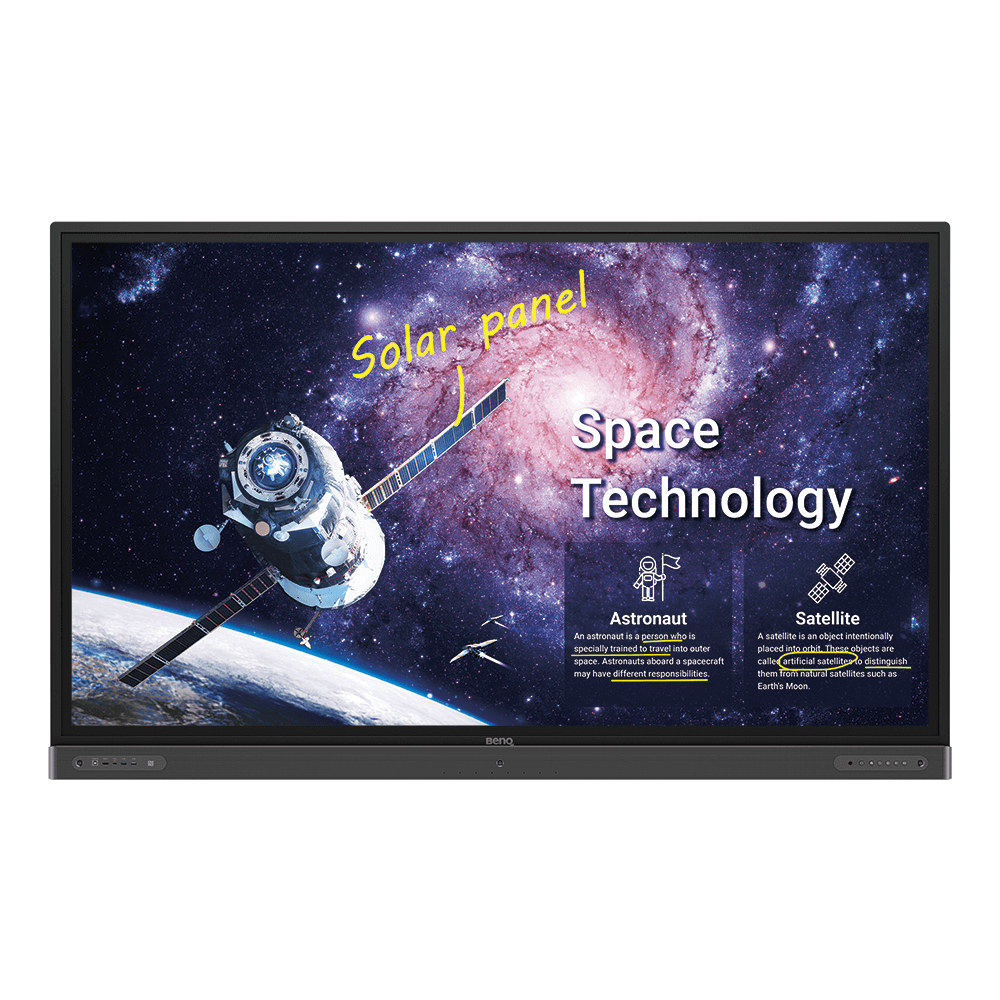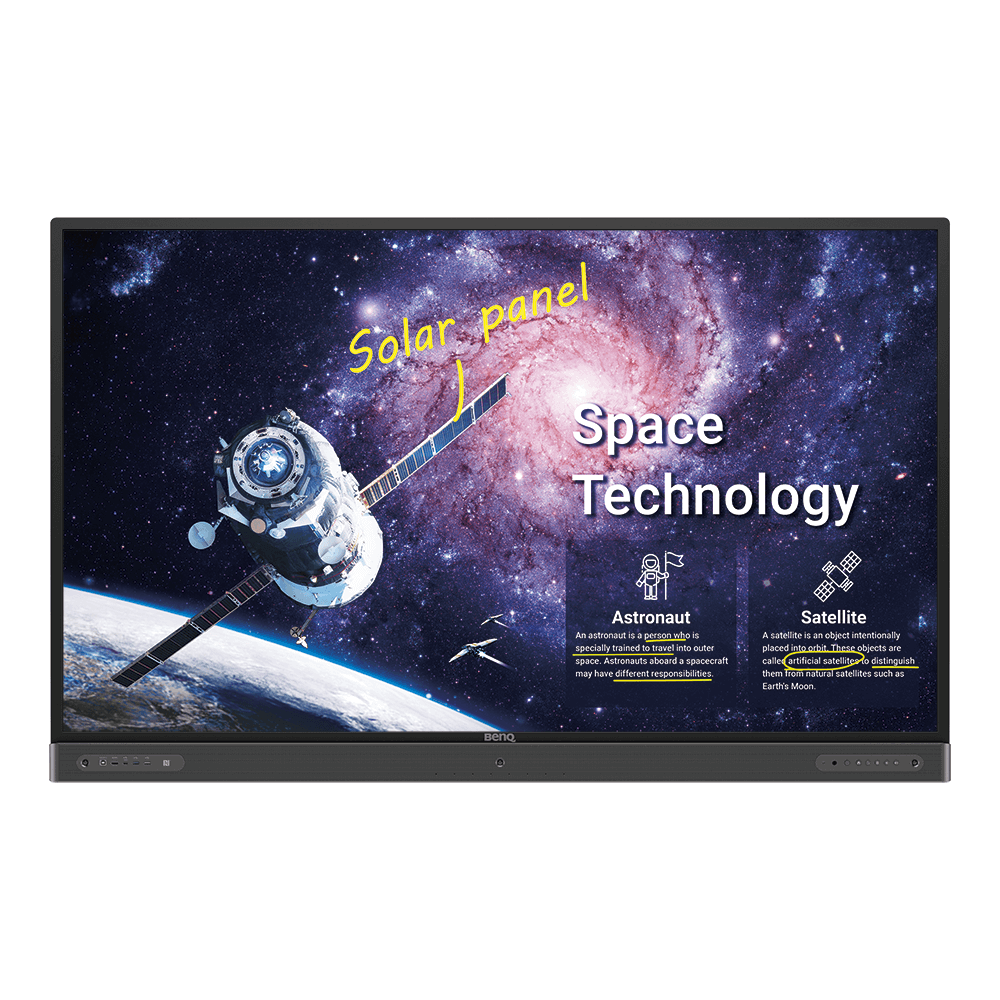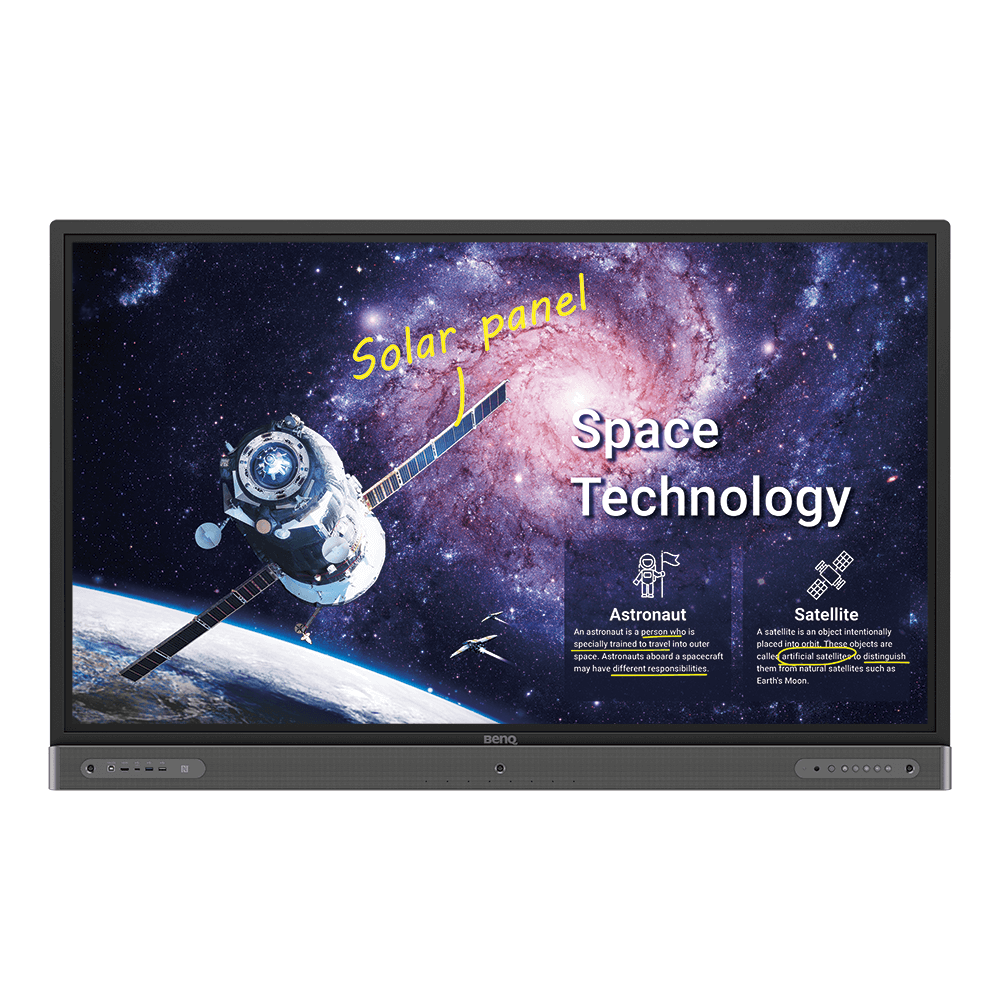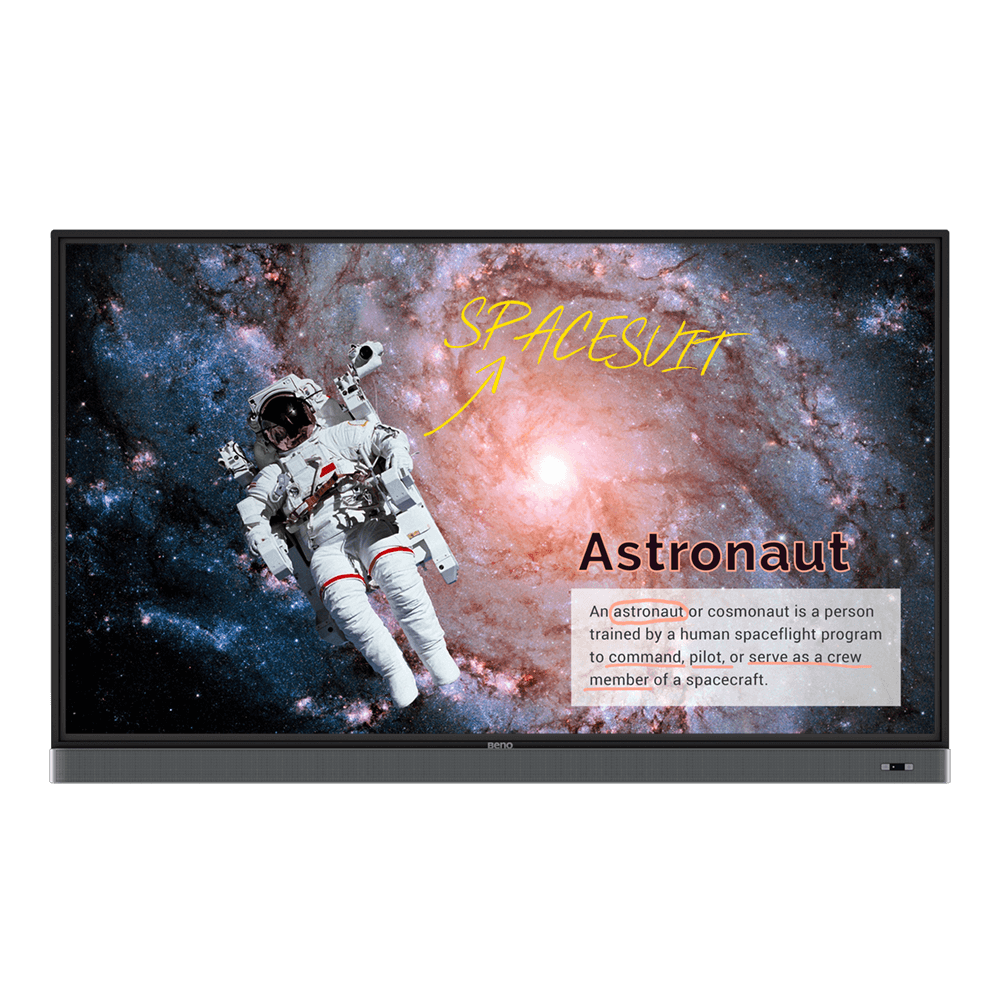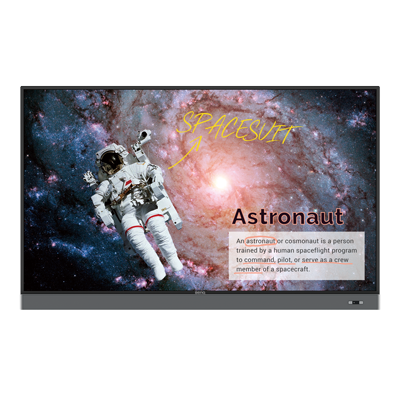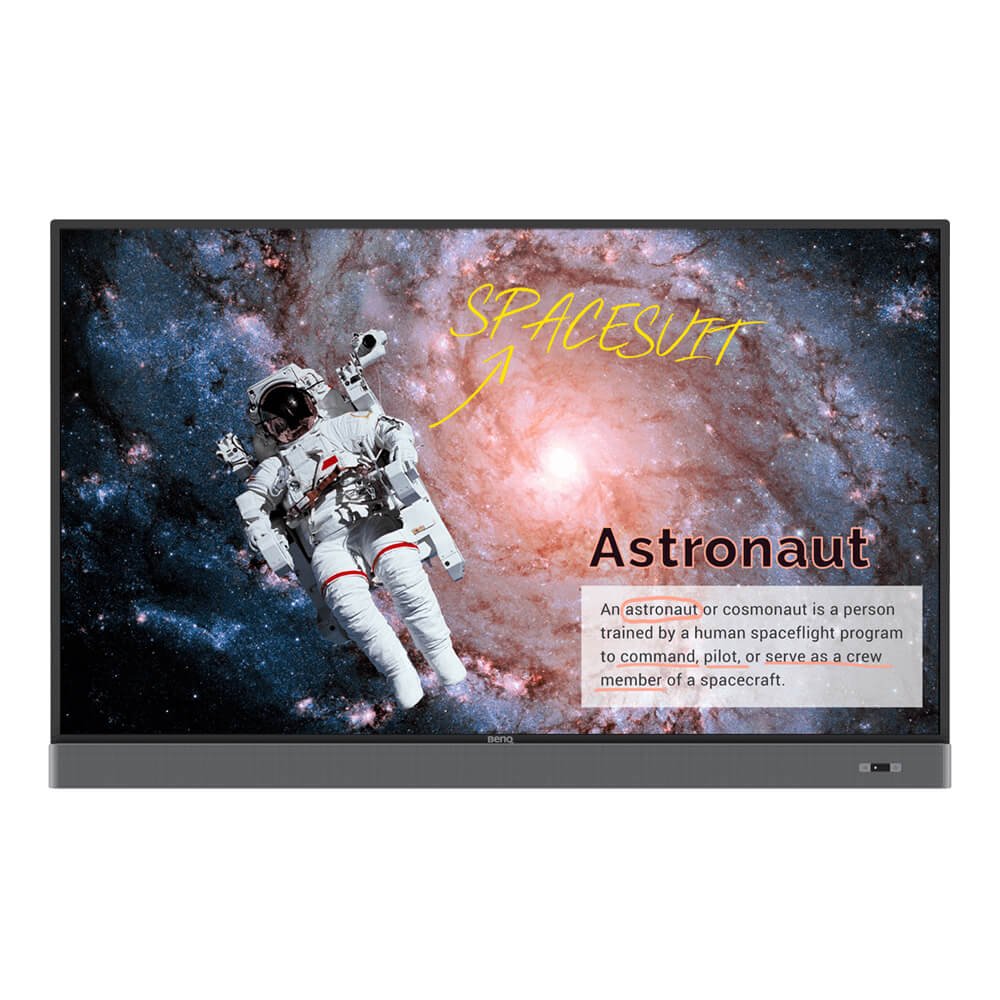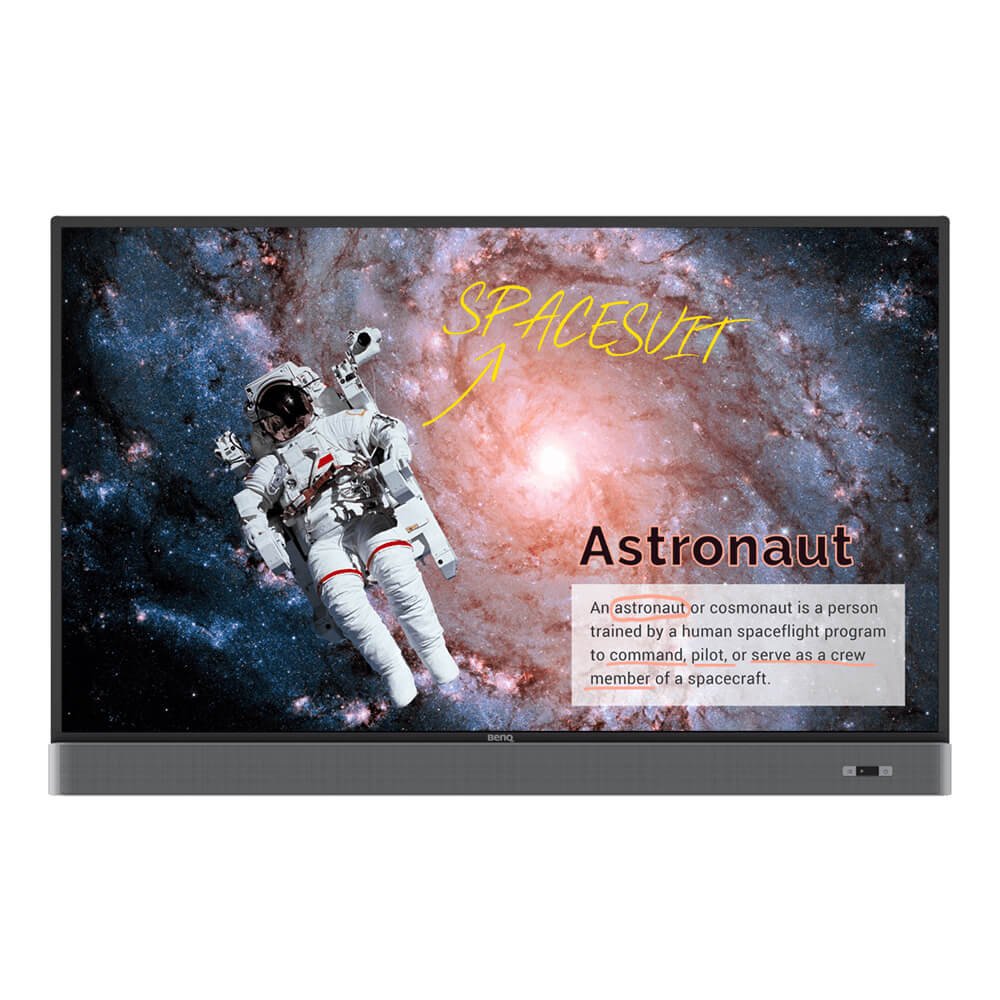Learn what you need to prepare and what steps to take to connect with your remote students in engaging way with BenQ Interactive Displays
How to Improve Remote Engagement with Students Via Interactive Displays
- Teacher Tips 'N Tricks
- Interactive Displays for Education
- 2021-11-26
Online learning and video conferencing were major trends before COVID, having risen in popularity for at least a couple of decades. However, the pandemic expedited matters by compelling many schools to provide learning almost entirely through remote study. With students unable to attend class in person, learning took to the internet, but the tools needed to make the most of this situation were not always available. And so, lessons have been learned.
One of these is that hybrid learning is likely here to stay, because it has the benefit of bringing in students who can’t come to class for a variety of reasons. Personal issues do arise and kids may not be able to come to class while still eager to partake remotely. With technology, that’s possible.
There are challenges unique to joining class from home. Student engagement leads the priority list, because when learners are based at home and don’t have the energy of a classroom, it’s much easier to lose their interest as they get distracted. A much more active and interactive style is needed for good remote learning, to ensure students remain invested and thus highly engaged. That calls for specific tools, and interactive displays offer an excellent foundation for your remote education needs.
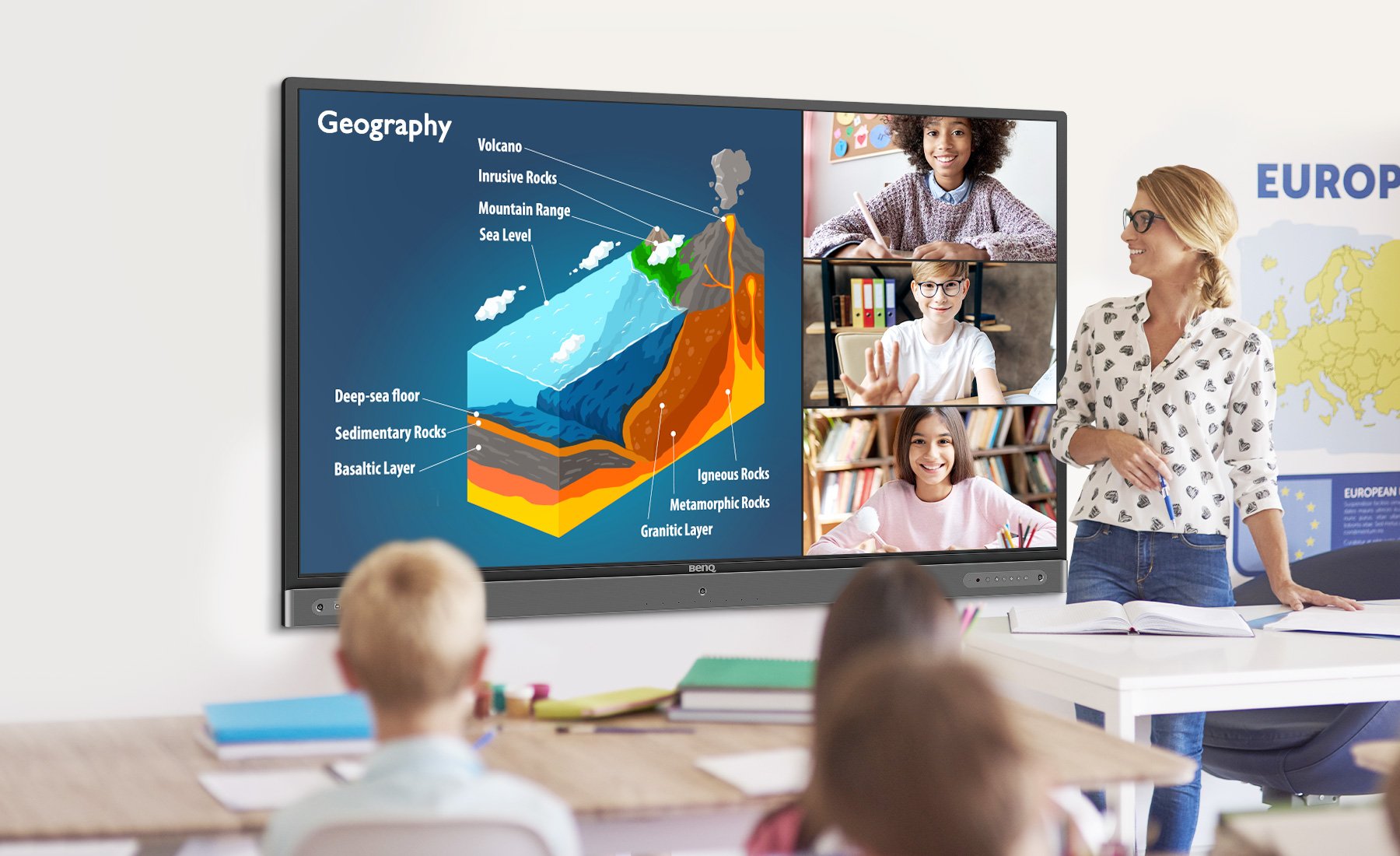
Remote Vs. In-Person Engagement
There are copious amounts of research on this, and the last two years have provided a treasure trove for those interested in the contrast between personal attendance and remote participation. The data indicates student engagement and even participation suffer. It’s a lot harder to make sure kids attend remote classes, and when they do, it’s a bigger challenge to keep them engaged. Motivation and self-control act as major factors in determining the success of a class. The psychological impact of working and learning at home should not be overlooked, as especially among students there’s a tendency to take remote classes less seriously than in-person sessions. All of these lead to compromised learning and reduced quality of education, as students that aren’t engaged don’t retain knowledge as well.
An obvious remedy is to deliver class sessions that students take more interest in, take more seriously, and better ingest to improve knowledge retention. Active students motivated by interaction and rewarding tasks participate more readily and take a keen interest in being part of the class process. That’s a big departure from remote classes that try to mimic the traditional model of teaching. If a remote class is just students watching a teacher lecture from afar, distraction and boredom are sure to take their toll. Interactivity and engagement are essential to avoiding this.
How to Engage with Students Located Remotely
An important approach is to make sure everyone’s included and invited to take an active role in the remote class (see how to set up a remote video conference class session using an interactive display).That entails a lot of collaboration, with group challenges and tasks.
Brainstorming activities and lively discussions where everybody’s welcome to speak their mind keep energy levels up and provide a personal stake for learners in the class. With BenQ interactive displays, EZWrite software facilitates collaboration with a host of digital whiteboard tools, from sticky notes to real time editing on the screen.
Students who are in the classroom can also share their screen content via Instashare mirroring software, which can then be viewed by ones joining remotely, so students can show the whole class what’s on their computer while the interactive display serves as the focal point everyone comes back to for the most important feedback and conclusions.
Gamification Scores a Win
Chances are the overwhelming majority of your students play video games, so it’s no surprise the gamification of class contents has been growing for a while now.
Incorporating game-like goals, objectives, rewards, and other elements into classes proves very effective. Student engagement rises dramatically in gamified classes, as students become involved rather than remaining passive observers. The competitive spirit imbued by gamification gets everyone pumped for achievements and therefore is great for engagement. Team-based games play up peer relationships and create stronger bonds among students, and those are highly beneficial to the mental wellbeing of kids.
The Kahoot! platform we’ve mentioned in previous articles has a plethora of games you can use, and we recommend you take a look for yourself. We also have some tips on teaching with Kahoot! on your interactive display.
Actively Engaged Teaching Style
Classes should have a more open-form approach. Ask questions, invite answers, and avoid lengthy stretches of passivity on the part of students. We have a more detailed look at how to set up a remote video conference class session using an interactive display to help you maintain an active and engaged class.
Community Focus
By community, we mean the spirit of the class. With interactive tools everyone can use, the class becomes a community, and you should welcome feedback. Students (and maybe parents) can provide feedback via tools like Google Classroom, which allow for privacy. Students can comment to you privately during the class if they’re too shy to voice an idea or opinion. This gives teachers and students new ways to interact, which is good for promoting a healthy community.
With cloud accounts and storage, you can create a platform for learning and collaboration. A shared file folder acts as a location where students place content and work on it together, making changes and edits that can then be discussed. Students ask questions and provide answers directly to each other, with teachers later coming in to provide feedback and answers. This togetherness forms a community of learning, as opposed to just people in the same room.
Moving Forward
Certainly there’s a connection between remote learning and the pandemic, but they needn’t always go together. Remote learning offers long term and will remain a force in education as we move on. This is the shape of the future. With the growth of the internet and related technologies we knew this was coming, and the speed of this evolution is only going to accelerate. While remote learning isn’t going to replace in-person learning, nor should it, it will certainly complement it to a growing extent, and it’s best to be.
Teacher Tips 'N Tricks
-
Trends & Knowledge
[Teacher Tips 'N Tricks] How to Use BenQ Interactive Display for Remote Teaching
2021.08.06 -
Trends & Knowledge
[Teacher Tips 'N Tricks] How BenQ Boards Enable & Improve Student Collaboration
Teaching cooperative skills to students stands as a primary goal for educators everywhere. See how BenQ interactive boards help with students collaboration
2021.11.12 -
Trends & Knowledge
[Teacher Tips 'N Tricks] How to Prepare Your Students for Collaborative Future in Tech-Rich Classrooms?
Collaboration is a skill your students will need in the future. Now, thanks to BenQ boards, you have a chance to teach your students how to work in a project team!
2021.11.05

